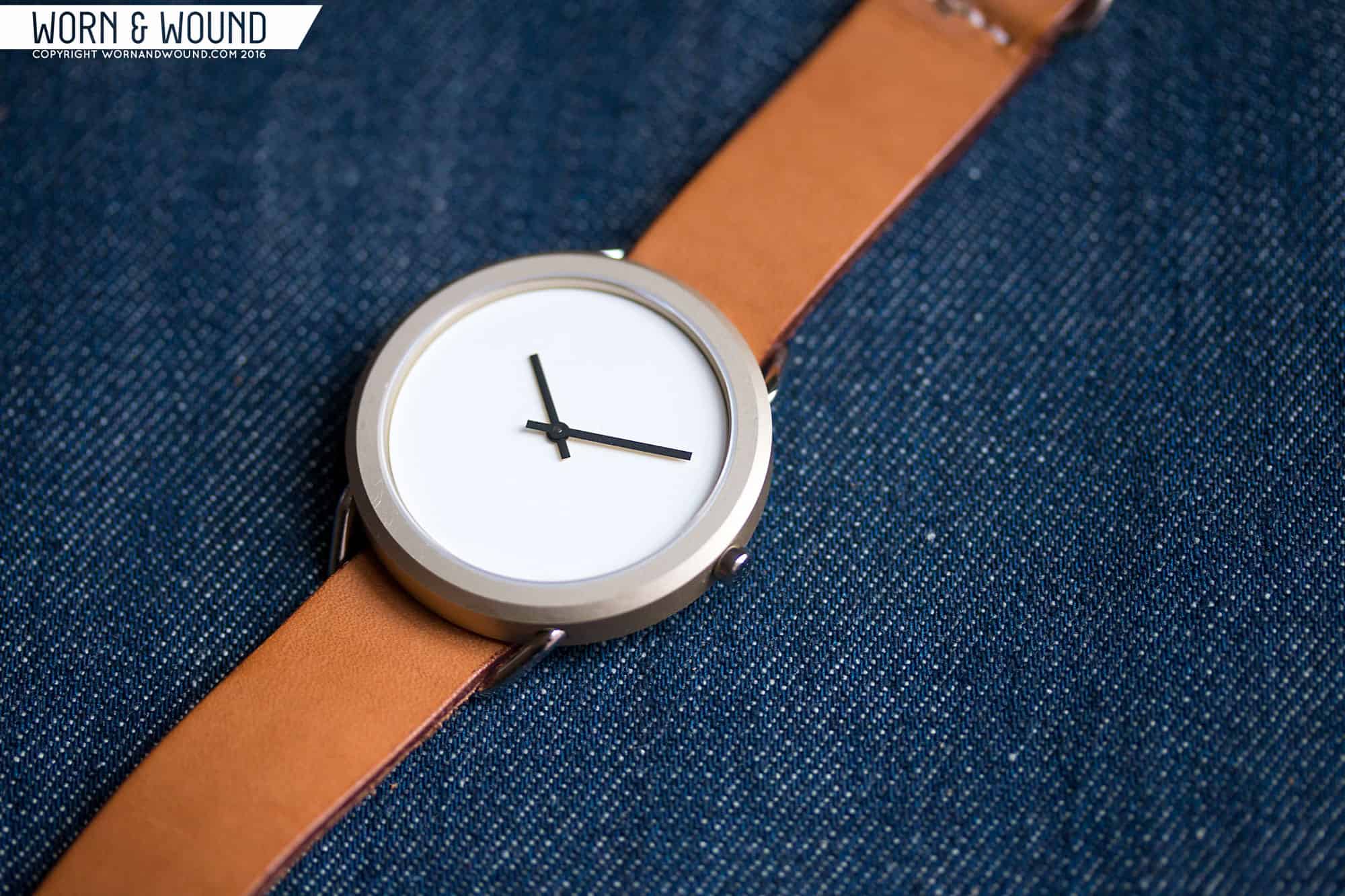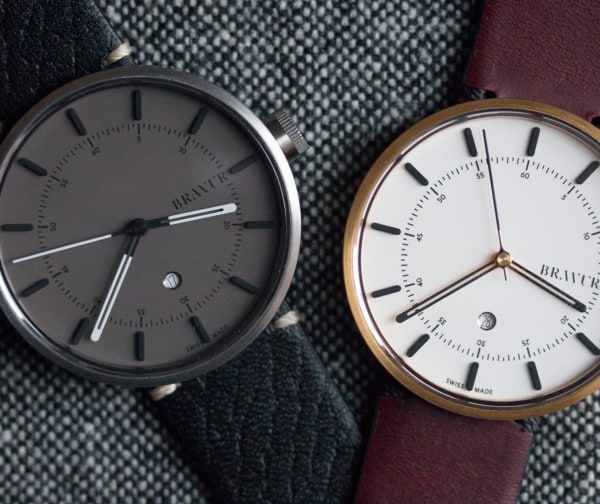These days, with all the cheap quartz Daniel Wellington wannabes out there, when a honest-to-goodness affordable watch with unique design comes around, it’s all the more interesting. So many brands are convinced they’re so clever with their little “redefining luxury” mottos and “cutting out the middle man” story lines that they think they can get away with over branded and under designed watches. It’s infuriating. It’s the newest get rich quick scheme, and as a watch enthusiast, it’s tiring and disappointing to see over and over.
So, when Eduardo Umaña emailed us about his new brand, Classic Engineering, and their first watch, the Vario, my attention was piqued. The watch was minimal, elegant, but a bit raw and while not revolutionary, was pursuing its own aesthetic. An aesthetic that mixes the stark lines brought by an industrial designer’s eye with a playful approach to materials. Upon closer inspection and a few emails back and forth with Eduardo, I was even more interested.
First, Eduardo is only 22 and has already launched a watch brand, not too shabby. But, it’s really the way in which he pursued making this watch that is so interesting. He didn’t just go to a factory in Asia with a sketch and say “make this”… No, he’s a designer and engineer by trade, so he pursued manufacturing components in the US. It’s very easy to underestimate the difficulty of manufacturing watches in the US, but any inkling you might have you can multiply by a huge factor when you’re also talking about a small brand with limited resources. So, it’s no surprise that he was met with closed doors for certain parts. What he then did was take a more global approach to production, creating a watch with parts from the US, Hong Kong, Switzerland and Holland.
The case design is particularly interesting and exemplifies the global approach. It’s 40 x 7mm block of aluminum, with steel wire lugs that project out and under, creating a channel for straps to pass through, no spring bars. It’s then capped off with a sapphire crystal. There is no case back or bezel, as it’s basically a mono-block, so the movement, dial, etc are top loaded in. The aluminum block is US machined and coated (also US) in a ceramic that gives the watch its color (gold, black or silver). Interestingly, the three coatings are different from one another, with the black being a super hard coating for industrial purposes, while the sillver and gold are less resistant. The wire lugs are then injection molded in Hong Kong out 316L stainless steel, and the whole thing is finally assembled in Switzerland, with the movement and dial.
While strikingly simple, the case is effective and attractive. The aluminum block is a cylinder with wide beveled edges. From a machining perspective, it’s fairly straight forward, which is important when trying to source manufacturing in the US. Without companies specializing in case making, brands must approach more industrial outfits, who don’t typically make aesthetic parts. To add some visual complexity, the wire lugs do the trick. The contrast of the polished steel to the more satin ceramic-aluminum is the first thing you notice. Rather than just differing finishes, they differ in color and feel. The shape of the wire lug is very interesting as well. They come out, kink down and in, then loop around return. I quite like the more angular design, differing from the standard wire lug shape.
The dial of the Vario is very reduced in nature. That’s actually an understatement. It consists solely of a white surface. No markers, no textures, no indentations… just a wide, white plane. On top are rectangular hour and minute hands in black, which are also US made. They are the same width, but the minute is longer making them easily distinguishable from each other. On one hand, there is something nice about the brutally simple dial. It makes the hands stand out, and it plays off of the plain, but bold geometry of the case. Like the steel and aluminum around it, there is a sense of the dial as a material. You become more aware of the quality of the white, the slight texture of the surface that makes it matte, how it picks up shadows from the case sides… It’s almost contemplative.
On the other hand, telling time on a marker less dial is a bit of a painful experience, even for those of us quite used to wearing watches. There is very little to use as a point of reference when looking at a glance, not even a logo. So, you always have to pause for a second and kind of imagine markers. I’m not saying they should have printed big bold numbers, but something, even just dimples in the surface at the hour, would have been nice. There is a great Coco Chanel quote (also the only one know) that goes “Before you leave the house, look in the mirror and take one thing off.” I feel like that is true for most watches, but here they might have taken off a bit too much.
Since there are no spring bars, the watch comes with a pass through strap made by the Guild of Holland. Sticking with the theme, it’s a very simple strap made out of a strong veg tanned leather. It’s straight cut, has dyed edges that still fray in a cool way, three pieces of polished hardware and is unlined. It’s plain but attractive, and puts the material itself in focus. You get to choose one of three colors, black, chianti or natural. I love natural veg tanned leather as it ages and contains unique patina through wearing. The color was a bit darker than expected, approaching a light tan rather than the pink/orange naturals often are.
On the wrist, the Vario wears very well, coming off as a 40mm lugless watch, thanks to the wire lugs. It’s wonderfully thin too, even with a slab of leather underneath, slipping under your shirt sleeve with ease. While my tastes vary when it comes to watches, with the occasional overly complex chronograph tempting me, I generally lean towards understated clothes made out of quality materials… Textured wools, tweeds, nice denim, oxford cloth, american leather, etc… The Vario appealed to that sensibility, and looked really good amidst those materials. It’s not a rugged watch in the sporty sense, but it is hearty and solid.
Inside of the Vario is a Swiss Made Ronda quartz movement with a 5-year battery life, ensuring it will stay on-time for a long while. With a price tag of $249, the Classic Engineering Vario is well-priced. It’s not trying to be as inexpensive as those throwaway fashion watches, nor is it trying to be some sort of luxury quartz concept. Rather, it’s priced for something that is made well, designed and engineered with intention and defines its own aesthetic. It’s also NOT launching on Kickstarter, but rather is available now through their website.
Obviously it’s not a watch for everyone, but for people looking for a modern daily wear quartz that are considering the dime-a-dozen pieces mentioned in the intro, this is a solid option. For me, I think this is a very cool platform as well as great first attempt, that I’m excited to see evolve. Obviously, I’d love a dial with some markers or printing, but moreover I’m excited to see what comes next. Where does Mr. Umaña take this concept to?









 Featured Videos
Featured Videos












